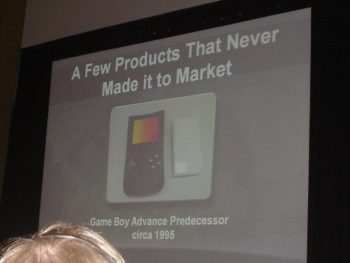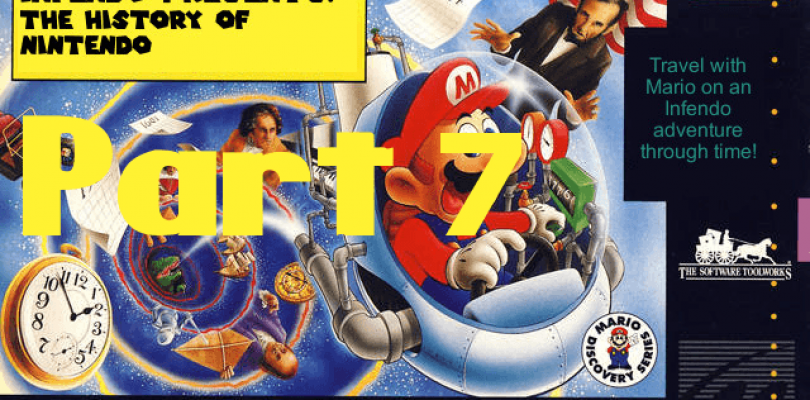Welcome to the Infendo Presents: The History of Nintendo! Join us as we chronicle Nintendo from their humble hanafuda beginnings, to the dominance of the Wii and DS and beyond!
To this point in Nintendo’s history, it could be said that the company had reached its lowest point in its long existence. Nintendo still managed to stay profitable with the Nintendo 64, but the company had begun to loose some of it’s mind share to Sony. No longer was the term to ‘play Nintendo’ a universal turn for the playing of all video games. Sony had taken a piece of that pie, and were threatening to eat the whole thing.
Had it not been for the enormous popularity of the Game Boy, Nintendo may well have been left out of the console race entirely. In the handheld market Nintendo was king, and come 2001, Nintendo would show the world why that was.
[youtube]https://www.youtube.com/watch?v=tE5b7quzbsc[/youtube]
Nintendo was able to successfully prolong the life of the original Game Boy by introducing incremental upgrades to the system, the last of which was to finally add color to the system in 1998. While Nintendo did make Game Boy Color slightly more powerful, it wouldn’t be until the launch of the Game Boy Advance that the system would see its first real power upgrade.
Rumors of a Project Atlantis began to circulate as early as 1996 in video game magazines at the time. Rumored as a 32-bit system, Nintendo would actually give us a glimpse behind the curtain of an early prototype at their GDC press conference.
Touted as a portable SNES, the Game Boy Advance would indeed receive its fair share of SNES ports. Many of Nintendo’s most popular titles from the Super Nintendo would breath new air on the GBA such as A Link to the Past, and Super Mario World.
[youtube]https://www.youtube.com/watch?v=EvK4HA9qKzc[/youtube]
Immediately, the system was a success. While its full color TFT screen was the main talking point of the system, the quality of games released on the console was its staying power. Over its lifetime, the many iterations of the GBA would go on to sell a massive 81 million units. This number is more impressive given that Nintendo would release the Nintendo DS in 2004, effectively only giving the GBA 3 years as Nintendo’s flagship handheld.
Two years after the initial launch of the GBA, Nintendo would fix the one complaint everyone had about the system. The lack of a built it screen light. With the Game Boy Advance SP, Nintendo would introduce a new clam-shell design to the system, in addition to including brighter, front-lit screen and a rechargeable lithium ion battery.
For many (myself included) the SP upgrade was reason enough to run to the store money in hand. While perfectly capable on its own, the Game Boy Advance line didn’t truly gain massive momentum until the GBA SP was introduced.
[youtube]https://www.youtube.com/watch?v=kKtaqP5Gygo[/youtube]
Nintendo would release the Gamecube in the same year as the Game Boy Advance, and with it, the first promise of connectivity was born. While only a handful of games actually used the functionality, many of my best high school memories evolve me huddled up with four friends with four GBAs and a Gamecube. Final Fantasy Crystal Chronicles anyone?
The life of the GBA was cut unexpectedly short by an unlikely source, Nintendo themselves. Originally planned as a ‘third pillar’ to go alongside the GBA and Gamecube, the Nintendo DS was launched in 2004 and adequately pushed the GBA out of the market. Nintendo designed the DS with full backwards compatibility to the entire Game Boy line, adding a cartridge slot the bottom of the unit. This was done because of the unconventional nature of DS at the time, and as an insurance policy if the DS would fail.
The GBA would continue to sell games and hardware well into the life of the DS, but nothing like how it was selling at its peak. Who knows what would become of the Game Boy line if the DS was never introduced. Would be playing on the Game Boy 3D today or the Game Boy Ultra? Who knows. All I know is that as a GBA owner at the time, I can trace some of my fondest video gaming memories to the console, which is probably why I still hold on to my little square brick of a clam-shell to this day.
The History of Nintendo continues tomorrow as we jump head first into the Gamecube generation!

